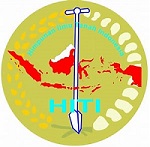KANDUNGAN TEMBAGA, SENG, DAN BESI DALAM SEDIMEN SUNGAI BOLAANG DI DESA BAKAN BOLAANG MONGONDOW
DOI:
https://doi.org/10.35791/se.22.1.2022.39883Keywords:
Micronutrients, Iron (Fe), Zinc (Zn), Copper (Cu), Quality standards, Unsur Hara Mikro, Besi (Fe), Seng (Zn), Tembaga (Cu), Baku mutuAbstract
Content of Copper, Zinc and Iron in the Bolaang River Sediments in Bakan Bolaang Mongondow Village
Micronutrients are essential nutrients needed by organisms in low amounts/ concentrations. The purpose of this study was to determine the content of copper (Cu), zinc (Zn) and iron (Fe) and the level of pollution in the sediments of the Bolaang River based on quality standards according to the Wisconsin Department of Natural Resources. The study was conducted in the village of Bakan, Lolayan District, Bolaang Mongondow Regency, sampling at five points on the Bolaang River was taken directly (grab sampling) and analyzed at the Environmental Biotechnology Laboratory (EBL) Bogor. There was only one sediment sample downstream river which its Cu content is under the pollution level (<32 mg Cu/kg). Two sediment samples posed toxic level below the permissible limit of 120 mg Zn/kg, i.e. The one sample at downstream and the other sample that occurring after sedimentation by meander. The result also detected that at all sampling points of Bolaang River, the Fe content of sediments in the Bolaang River are above the permissible standard pollution (40,000 mg Fe/kg) of the Wisconsin Department of Natural Resources.
Downloads
Published
How to Cite
Issue
Section
License
Authors who publish in this journal agree to the following terms:
Authors hold their copyright and grant this journal the privilege of first publication, with the work simultaneously licensed under a Creative Commons Attribution License that permits others to impart the work with an acknowledgment of the work's origin and initial publication by this journal.
Authors can enter into separate or additional contractual arrangements for the non-exclusive distribution of the journal's published version of the work (for example, post it to an institutional repository or publish it in a book), with an acknowledgment of its underlying publication in this journal.
Authors are permitted and encouraged to post their work online (for example, in institutional repositories or on their website) as it can lead to productive exchanges, as well as earlier and greater citation of the published work (See The Effect of Open Access).




